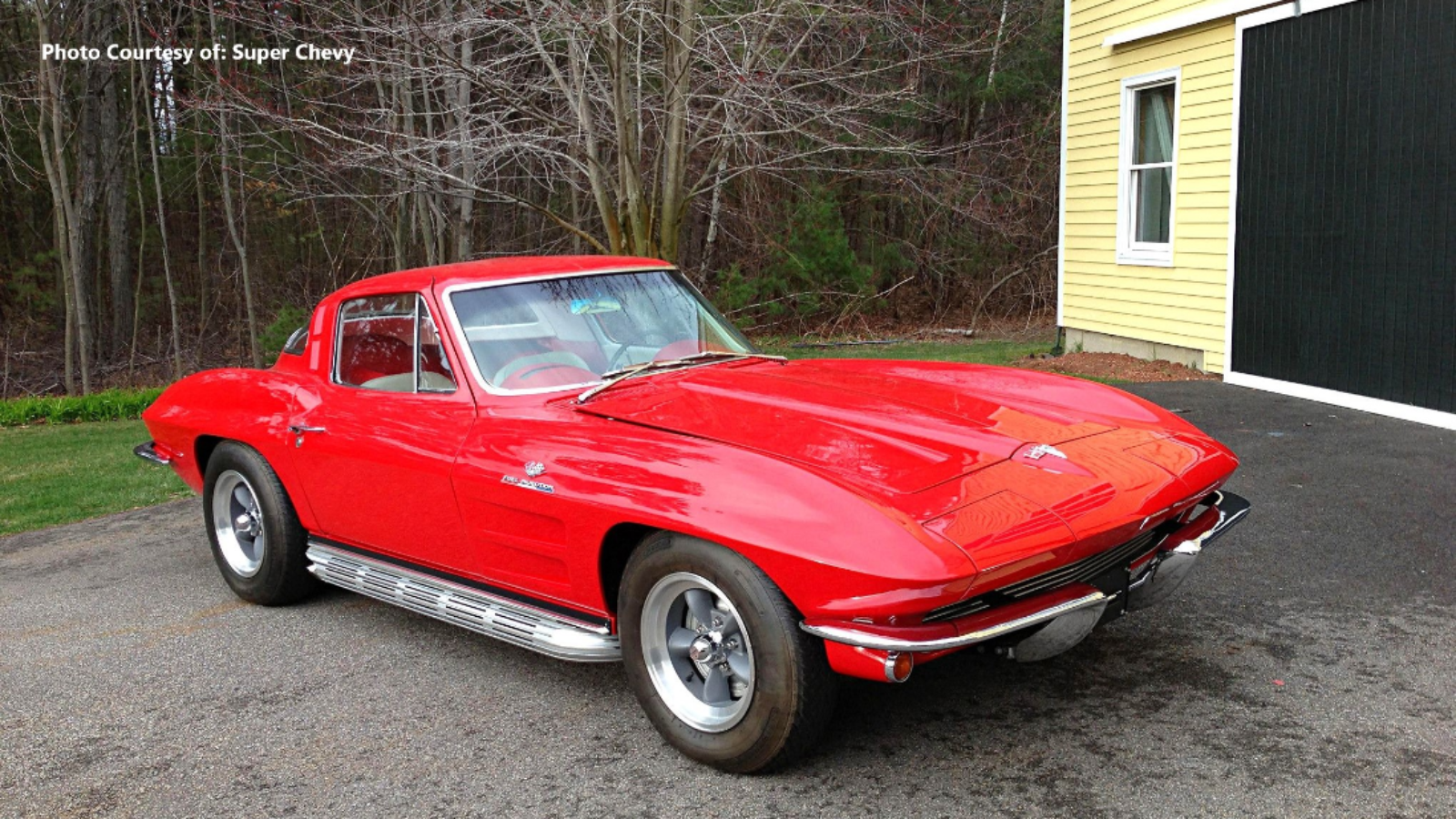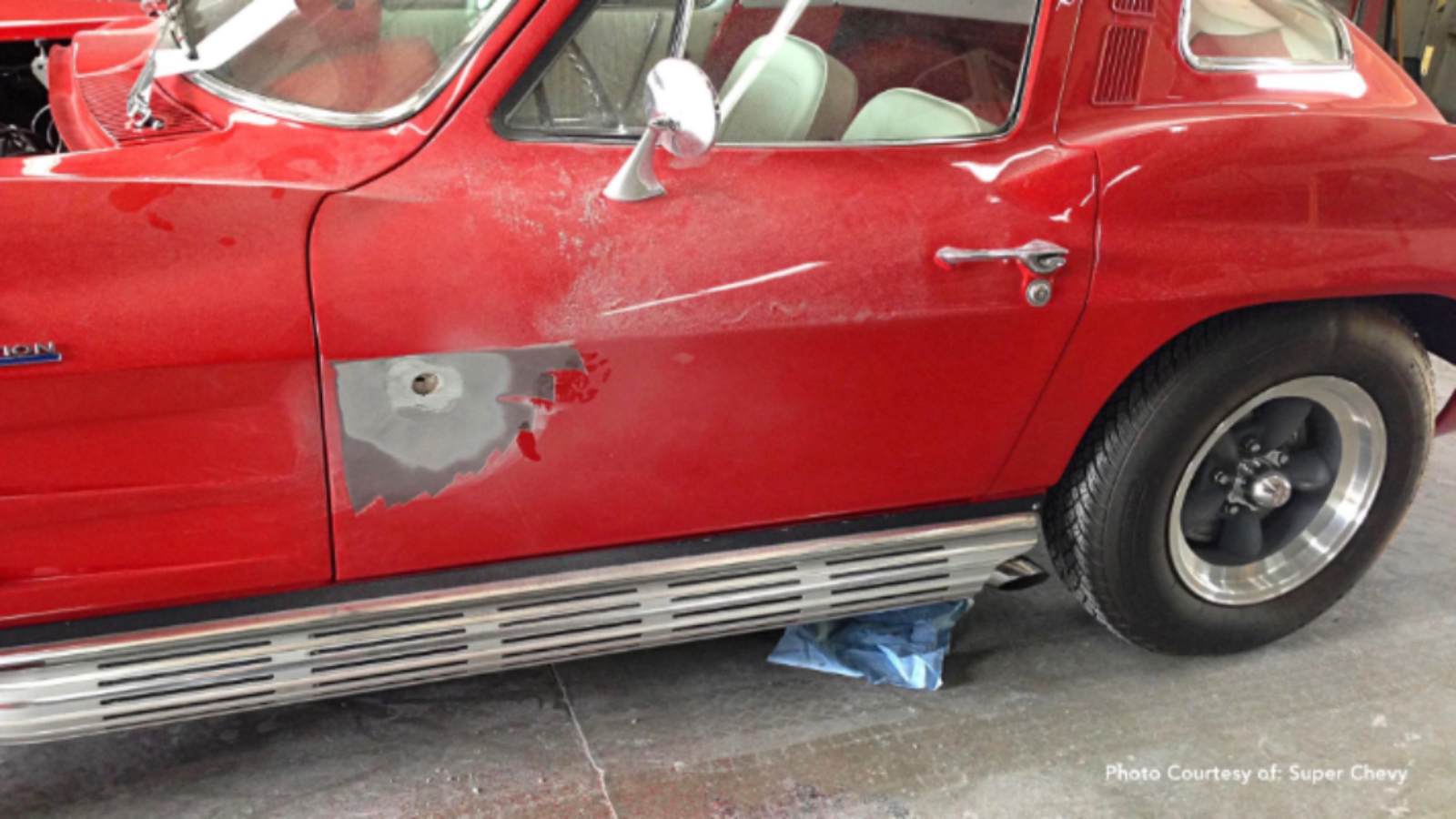1964 Corvette Race Car Barn Find
Daily Slideshow: This "barn find" was hiding as an ordinary '64 Corvette while hiding its true big-tank fuelie racing history going all the way back to Daytona.










Barn Finds
A barn find can be the hidden gem of the automotive world. Tucked away, in the corner of a barn, warehouse, or often even in an actual house, the cars are stored in all sorts of environments. Preserving a vehicle comes with all sorts of varied challenges. Often times, in an attempt to store a car in the best way possible, people actually end up making it much worse. Examples are covering the car with fabric or plastic tarps, trapping moisture and creating a perfect, dark cool environment for mold. The same crevices, nooks, and crannies that eat your 10 mm socket and that bolt that you still haven't found, also serve as perfect little homes for mice and other rodents. Rat nests that would more appropriately be called Hotel de la Rat have been pulled from some of the rarest cars ever made that happened to be stored in a “barn”. The care and passion that has to go into storing a car properly are just outright astounding.
Lets not even get into the mechanical components of car storage. Fluids break down. Oils will separate, even start to congeal. Plastics become brittle as many of the elements reach their shelf life. The break down of plastics happen at a molecular level, where the element will lose electrons and become a different isotope. Try restoring something that isn’t even the same element anymore.
Posible Rarity
Jonathan White’s new Corvette is no such find. Hiding in plain sight, was this 1964 Corvette “big tank fuelie” which has been cared for as a normal ‘64 Corvette, with no knowledge of the racing pedigree. Big-tank Corvettes came factory with a 36 ½ gallon tank, reducing the number of stops during a race. There were only 38 ever produced. The car was found on a horse racing farm, appropriately enough, stored with one other Corvette, an L88 clone. When White initially found the car, he quickly rang up Joe Scafidi, the owner of The Bow Tie Shop in Billerica, and an experienced veteran in the Corvette game, to help him through the process. After some quick digging and fact-finding, Scafidi was skeptical. The car appeared to be a shade of orange in the photos, a color the 38 big-tank Corvettes never came in. After reassuring Scafidi the car was indeed red, he “grabbed [his] checkbook, Joe grabbed his ramp truck, and drove out to the seller.”
>>Join the conversation about this 1964 fuelie C2 Corvette right here in CorvetteForum.
Two is Better Than One
When they arrived, the sale was contingent upon White buying both Corvettes, so with a tinge of hope that the L88 was factory and not a recreation, White signed over the check. With the chance of winning big on an L88, there really is no risk, especially with recreations still going for big bucks in many auctions. After the L88 sadly turned out to indeed be a clone, they sold it off and concentrated their efforts on the even rarer ‘64.
To verify the cars history, Scafidi began digging into the paperwork. His years in the business and experience verifying cars expedited the process and made the efforts less intensive. The NCRS (National Corvette Restorers Society) has some an exhaustive validation process that David Brigham helped getting through. During this search is when they began to discover that the car may have some real racing heritage.
>>Join the conversation about this 1964 fuelie C2 Corvette right here in CorvetteForum.
Finding the History
After the due diligence of pre-purchase research was done, Scafidi and White decided to pull the trigger and head a couple of towns over to make the purchase. As part of the purchase agreement, White was to purchase both Corvette’s on the horse ranch. Not prone to turn down a possibly original L88 and a big-tank, White was happy to comply.
Once purchased, the next step is full validation by the NCRS. This is what is needed to establish the car as an original and verify the legitimacy of all claims. From the NCRS Deliver Data Search, the car appeared to of been sold new to a small dealership called in Manchester, Kentucky, Clay Motors. Red with the white interior.
Scafidi, a year or so after the purchase, while scrounging through some old racing photos, stumbled on a picture that may have been of their new Corvette project, the only issue was it was a white interior, while the recently purchased one was black. After doing some more digging, they discovered the ‘64 had factory codes for a white interior. Since the car already had the big tank, a factory option, the signs were looking good.
>>Join the conversation about this 1964 fuelie C2 Corvette right here in CorvetteForum.
The Final Discovery
Now that Scafidi and White were confident this was Red Lewis’s car, all that was left was to verify the racing heritage on the car itself. There are holes in the door panel that lights are installed on the illuminate the numbers during night driving. Since Lewis had sold the car off and the buyer converted it back to a road car, there were only two possibilities, the doors had been replaced, or the holes were filled in.
“I had David Brigham come over to my shop and I stripped the paint and primer off the area of the door on each side where the lights were,” Joe Scafidi said. “At the long races at Daytona, they needed a small light in each door to light up the number to race at night.”
Once the holes were discovered, the final card was placed on the deck. They had a verified, big tank fuelie race car. A rarity with the racing heritage to back it up, truly a one of a kind find.
>>Join the conversation about this 1964 fuelie C2 Corvette right here in CorvetteForum.
For help with your maintenance and repair projects, please visit our How-to section in the forum.
